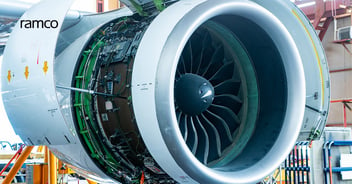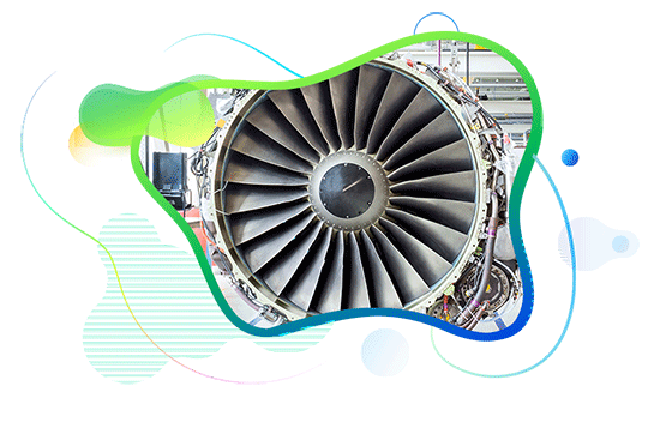
All That You Need to Know About Aviation MROs
Published :

MRO stands for Maintenance, Repair, and Overhaul (MRO) in Aviation Industry
Maintenance, Repair, and Overhaul (MRO) services are essential for any industry that uses machinery to run operations. In the aviation sector, the term MRO aviation refers to all the activities that are aimed at ensuring that the aircrafts remain ready to fly at all times.
Airports around the world have different types of MRO aviation facilities on-premises. Typically, the maintenance work is done on the plane’s airframe or the engines. However, nowadays the MRO aviation activities also include component MRO. Depending upon the type of service required, there are MRO services that need to be delivered at airports, and at times at designated off-airport facilities. For instance, activities like routine in-service inspections, daily check actions, or regular troubleshooting, can be carried out when the aircraft is parked in the airport. However, if avionics, radios, and other removable parts require servicing, they can be removed from the aircraft and taken away for the required MRO services. The three core types of MRO operations are:
Maintenance – When work is done to ensure that the aircraft is in prime condition. There are no snags or failures observed, but the aircraft is serviced to simply keep it in functional readiness.
Repair – Aircraft often require repairs as they are complex machines with thousands of moving parts and software integrated. If an instrument panel doesn’t respond the way it should or there is a dent, an engine failure, or a broken window, repairs are carried out.
Overhaul – With a high wear and tear rate, most aircrafts undergo overhaul after a specific duration of flight operations. As a part of the overhaul process, aircrafts are dismantled piece by piece, each part inspected and reassembled. The overhaul process allows detailed inspection of all surface and internal parts of the plane and is a key element of the aircraft’s lifecycle management and enhancement.
Nowadays, there are various types of MRO facilities in operations. Let’s take a look at these:
These are specialist MRO firms which might be tiny businesses delivering specific services to certain types of planes, or large MRO aviation companies which can cater to all types of aircrafts including fixed-wing, rotary, drones, and eVTOLs.
FBOs are based at airports and they offer various line maintenance activities such as aircraft refueling and parking for resident and transient aircraft. Leading FBOs have built-in MRO aviation facilities.
All airlines focus on maximum utilization of their fleets. That’s why large airlines have their own MRO divisions which help them take care of their aircraft in a faster and more cost-effective manner.
Smaller or regional airlines have different MRO approaches. They have smaller fleets, fewer flights, and lower profit margins compared to national and international airlines. These airlines maintain smaller and spread-out MRO activities. They often lease space from the FBOs at major airports instead of building their own hubs.
The leading corporate flight operators also build their own MRO facilities. Typically, they would have a crew of certified mechanics to work on their planes exclusively.
Major armed forces maintain large numbers of aircrafts and helicopters with sensitive equipment and weaponry. Thus, they tend to maintain their own MRO facilities which deliver the same range of services that the civil MRO aviation companies deliver.
Irrespective of what kind of MRO aviation firm it is, most of the leading firms in the sector use advanced cloud-based aircraft maintenance software to take care of their needs. This is where Ramco’s world-class aircraft maintenance software can take care of all types of MRO activities on a single platform. These include:
Component MRO: Ramco offers a standard platform enabled MRO solution comprising Component Receipt to ARC Release, Quote Management, and Invoicing processes with efficient customer interaction capabilities for enhanced operations, usability, and easy handling
Engine MRO: Ramco’s MRO aviation software enables Engine slot management, Work scope evaluation, Engine visit, estimations, build-up, kitting, Digitized task card, Maintenance tracking, ARC, and Quotation & Invoicing processes with efficient customer interactions
Line MRO – The software takes care of AMO and Line station maintenance operations with efficient work scoping, defect reporting, and flight service billing with ease
Hangar MRO – It offers end-to-end cycle from Aircraft Induction to Billing, Work scope Management, Task card digitization, efficient planning, connected inventory planning, and Automated invoicing functions
Using Ramco’s advanced aircraft maintenance software reduces operational costs, inventory leakages, and lack of coordination among MRO crews. At the same time, it leads to enhanced customer satisfaction and growth of business for the MRO aviation companies!
Enterprise asset management (EAM) involves the management of mission critical assets of an organization throughout each asset's lifecycle. EAM is used to plan, optimize, execute, and track the needed maintenance activities with the associated priorities, skills, materials, tools, and information. The aim is to optimize the quality and utilization of assets throughout their lifecycle, increase productive uptime and reduce operational costs.
Enterprise asset management (EAM) involves the management of the maintenance of physical assets of an organization throughout each asset's lifecycle. EAM is used to plan, optimize, execute, and track the needed maintenance activities with the associated priorities, skills, materials, tools, and information.
The software helps in effective maintenance of assets through preventive, predictive, shutdown and breakdown maintenance strategies. The system also helps enterprises mitigate equipment risks by enhanced safety standards. The streamlined operations and improved asset performance helps organizations increase their investment effectiveness.
EAM is important because it helps organizations track, assess, manage and optimize asset quality and reliability. Asset intensive Organizations have hundreds, thousands, even millions of assets which needs to be maintained to maximize / optimize life of these assets to increase the return on investment.
The key features of effective EAM are:
Asset Intensive companies under the following Industries :
Contact us for a meeting and schedule a demo
This differs on case to case basis, based on the type of installation and unique industry specific requirements. Contact us for a meeting and schedule a demo.
This differs on case to case basis, based on the type of installation and unique industry specific requirements. Contact us for a meeting and schedule a demo.
Stay Connected, follow us on LinkedIn / Twitter to know more about EAM Software latest trends.

Prakash Babu Devara is Head of Aviation Marketing at Ramco Systems, bringing over 15 years of experience in marketing and branding. With a passion for aviation and technology, he is dedicated to bringing the best of both worlds together to drive value proliferation. Prakash has a proven track record in developing and implementing effective marketing strategies, building strong brands, and driving business growth. In addition to his role at Ramco, he is an aviation blogger and a seasoned public speaker known for communicating complex ideas clearly and engagingly.

All Rights Reserved. © Copyright 2024. Ramco Systems.